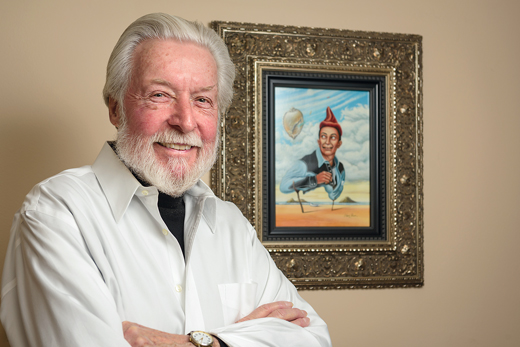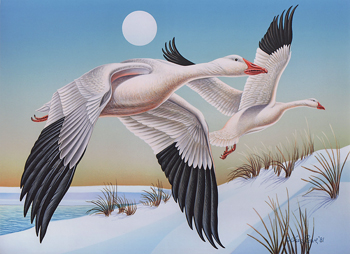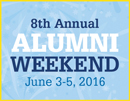
A surrealist's fowl encounter
OUR FACULTY | At UD, he taught graphic design to hundreds of students and launched many careers in art. Over the years, his surrealistic paintings have hung in highbrow galleries around the world. For six-plus decades, Prof. Emeritus Charles Rowe has been keenly focused on the abstract expression of metaphysical concepts, spiritual talismans and mythic ideals.
So it might seem odd that one of the works Rowe seems destined to be remembered for is not the paintings of a mustachioed nose poking through a doorway, or rockets zooming past a bison skull—but his bucolic, peaceful and decidedly non-abstract portrait of two dignified ducks flying past a full moon.

In Rowe’s broad-minded approach to art, it wasn’t really that much of a leap. By winning the 1981 Delaware Waterfowl Stamp Contest, he believes he succeeded nicely in showing the wildlife-and-waterfowl purists that a duck can be a bit more than just a duck—that even a hunting stamp can embrace subtle cues from Japanese art, Egyptian aesthetics, ancient Chinese techniques.
“Most duck stamp paintings, the birds are floating in the water, a couple of reeds thrown in. The judges said they’d never seen anything like that before,” Rowe says of the competition, held annually to select the artwork that will grace the upcoming hunting season’s “Migratory Waterfowl Stamps.” The stamps serve as a hunting permit in Delaware and other states. Typically, the proceeds of duck stamps are used to fund habitat protection and other conservation measures—and the stamps themselves often become collectibles.
“One of the jurors said, ‘There was your painting, and none of the others even existed.’ That was a nice compliment,” remembers Rowe, now 82, who has had his award-winning painting tucked away for some three decades—and is now ready to see it go.
This April, the painting and a handful of other Rowe originals were put up for sale at the Delaware Foundation for the Visual Arts’ Spring Art Show, where Rowe was celebrated as Honored Artist for his years of contributions to the local art scene. “People locally haven’t seen a lot of my work, because mostly I’ve exhibited in national shows,” he says. “So this was a good chance to give a Delaware audience access to a Delaware artist’s work.”
Ultimately, Rowe hopes that the painting—titled “Black & White”—doesn’t remain hidden for another 34 years. “I’d like to see it go into a collection where the public can see it,” he says.



